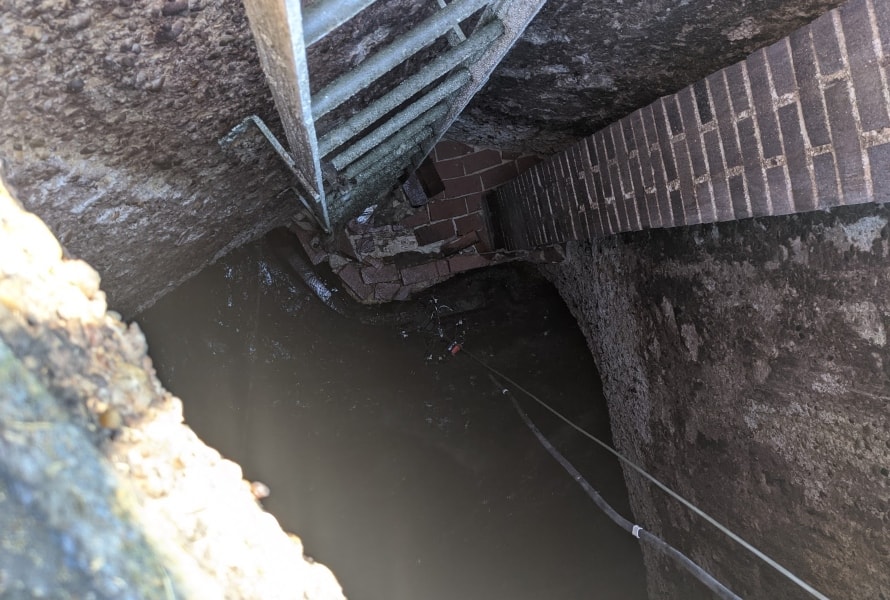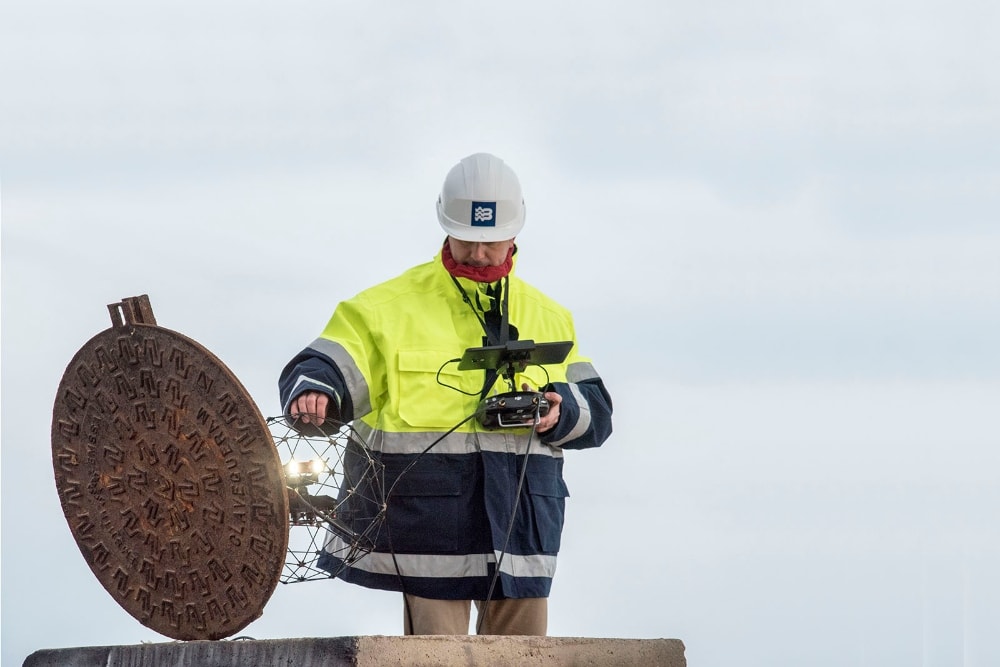Looking for Work? Drone Sewer Inspections Are Creating Jobs and Helping Governments Save Money
BY Zacc Dukowitz
25 November 2021Looking for work as a drone pilot?
A new job you might consider is being a drone pilot for sewer inspections. The work may not sound all that glamorous, but it’s critical for the maintenance of wastewater infrastructure.
And it’s not as gross as you might think.
Traditional sewer inspections are often performed in person, requiring inspectors to crawl through large sewer pipes, and in some cases even don scuba gear and swim through active flows. But when sewer inspections are performed by drone, pilots typically stand outside the pipe they’re inspecting, flying inside without needing to enter the sewer system at all.

Credit: Flyability
A few years back, using drones to inspect sewers was a new and fairly untested idea.
One of the main limitations to doing this kind of work with a drone is that you can’t use just any type of UAV to fly in a sewer pipe.
Flying underground means that you’ll probably have to operate without GPS, and you’ll also need a rugged indoor drone made to fly in confined spaces.
But drone technology has come a long way over the last few years, and using drones for sewer inspections is becoming more and more commonplace.
In France, the huge wastewater management company Suez has been using Flyability’s Elios 2 indoor drone to speed up its sewer inspections, and in the U.S., infrastructure management giant AECOM has also been using indoor drones to do sewer inspections for city governments.
How Drones Are Helping Update French Sewer Systems
Sewer inspections are a big concern in France right now, due to a law that requires all major French cities to inspect their wastewater infrastructure by 2026.
In terms of city timelines, that deadline is just around the corner. And there are thousands of miles of sewer pipes that need to be inspected—in the city of Toulouse alone, there are 2,229 miles of sewer pipes, all of which must be inspected in the next five years.
Inspectors at Suez estimate that they can inspect about 1,300-19,00 feet of pipes per day using traditional methods, which is pretty slow-going given how much distance needs to be covered.
And traditional inspection methods aren’t just slow, they’re also incomplete. Inspectors from Suez estimate that only about 80% of the wastewater infrastructure they need to inspect can be inspected using traditional methods.
But indoor drones present a powerful tool for improving things.
We inspect 1% in a week [with drones]. Normally, we do 1% in a year.
– Alexandre Ventura, Head of Inspection Technology Innovation at Suez
Using the Elios 2, inspectors at Suez have been able to change the way it does these inspections, allowing them to improve:
- Speed. Drones help Suez inspectors cut the time needed for inspections almost in half, allowing them to increase the amount of pipe they inspect per day from 1,600 feet to as much as 3,000 feet.
- Data quality. A good indoor drone can capture high quality images of the conditions inside a sewer system—images that are often better than those that inspectors could get using other methods.
- Access. Indoor drones can help inspectors collect visual data in places they couldn’t otherwise access, closing the gap left by traditional inspection methods.
- Savings. Because the inspections are quicker and require less people to perform them, they’re also less expensive, which helps cut costs and increase savings.
Watch this video to learn more about the sewer inspection work Suez is doing in France:
How Does a Sewer Inspection Work?
In a typical sewer inspection, inspectors will be looking for any defects or obstructions in a pipe that could cause it to break or malfunction.
The goal is to find problems before they get worse. If a major sewer pipe cracks open or becomes blocked, the negative consequences can be quick and quite bad for those who live in the area.
Some of the main issues that inspectors look for when they’re doing wastewater inspections are:
- Root intrusions
- Accumulated mud, silt, rocks or other debris
- Cracks or other defects in the pipes
To do these visual inspections, inspectors traditionally enter the pipes in person, use large robots (if they can find a big enough access point), or float a CCTV camera on a raft, hoping that it points in the right direction.
All of these methods have drawbacks. Entering in person can be dangerous and slow, the large robots are expensive and so big they require a crane to be moved, and the CCTV camera requires a lot of luck, since you can’t control which way it faces while it floats through the pipe.
But drones like the Elios 2 present a novel solution since they’re small enough to enter a manhole, can fly in confined spaces without GPS, and can capture high quality images.


Credit: Flyability
Drone Jobs for Sewer Inspections
So how can you find this kind of work?
The majority of sewer inspection work is contracted with third party inspection service companies like the two we mentioned above (AECOM in the U.S. and Suez in France)—as far as we know, it isn’t very common for cities to contract with individual dronepreneurs for this type of work.
Your best bet to break into this kind of work is to find a job as a drone pilot for an inspection service provider or a drone service provider that already works in the inspection space.
The good news is that you don’t necessarily need any special inspection certification or experience to get this kind of work. Whether you sign on at a large inspection company or at a drone services company, your job will be to fly the drone and collect visual data. A certified inspector will be there to look at your live feed while you fly and also to review the footage afterward.
For example, John Delp, the Chief Unmanned Aircraft System (UAS) Pilot at AECOM, doesn’t have any special sewer inspection knowledge, but he was one of the pilots involved in a recent sewer inspection that took place in the D.C. metro area.
[Learn more about John’s work in this episode of the Beyond Part 107 podcast, which he did along with Zacc Dukowitz of UAV Coach and Larry Barnard of Chevron.]
Want to learn more about the different kinds of drone jobs out there? Check out our master list of drone jobs, an in-depth resource covering all the ways drone pilots are making money these days. (Skip straight to the bottom to see open drone jobs on Indeed.)


